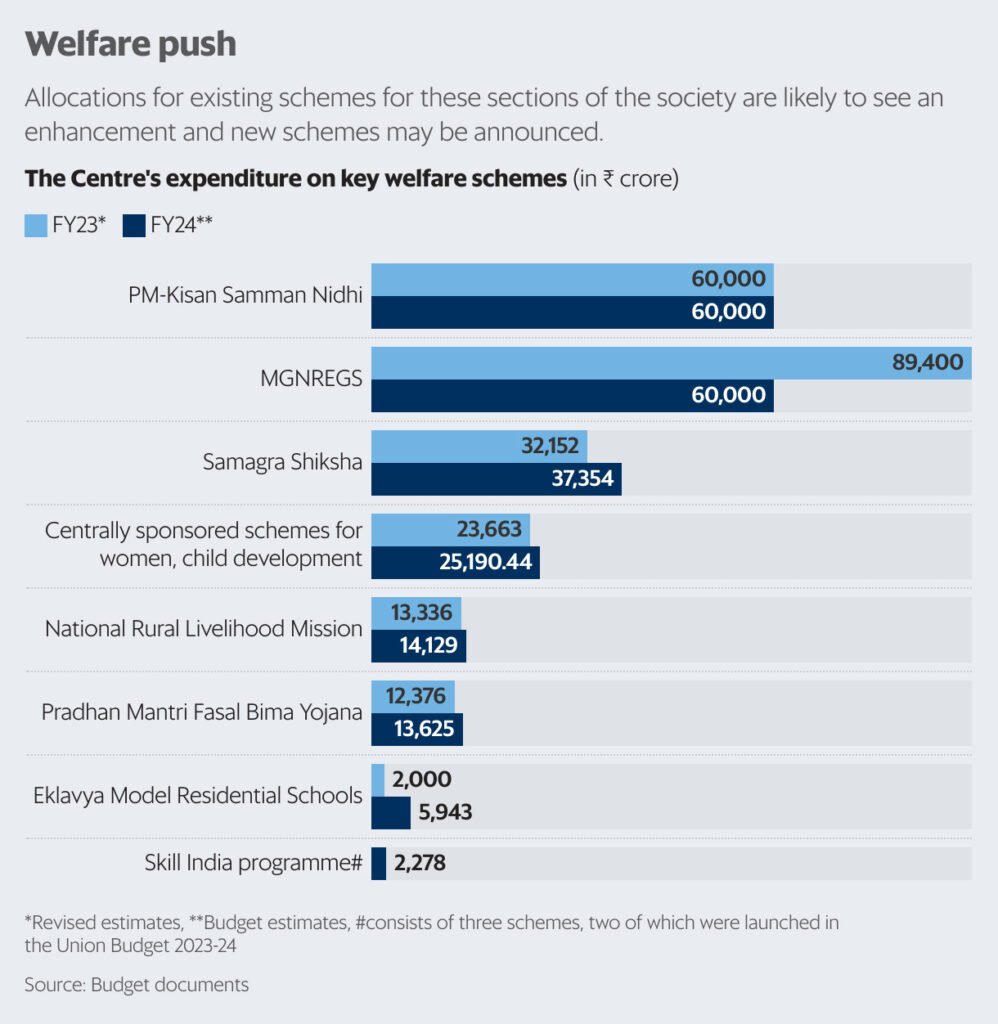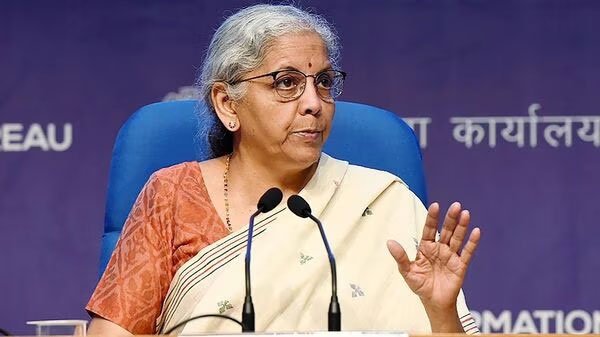Anticipate increased allocations for current societal sectors and the prospect of new scheme announcements.
NEW DELHI: As the Bharatiya Janata Party (BJP)-led National Democratic Alliance (NDA) looks toward a potential third term in office, the spotlight is on Union finance minister Nirmala Sitharaman’s pre-election budget. The agenda? Welfare schemes for five key societal segments—women, the impoverished, youth, farmers, and tribals. Prime Minister Narendra Modi’s promise of inclusive growth is driving this focus, with a commitment to addressing the needs of these crucial sectors.
Enhanced allocations for existing schemes and the potential announcement of new initiatives are anticipated for these societal segments, as insiders familiar with government deliberations revealed. One insider highlighted, “Schemes aimed at these societal segments will take center stage in the budget. For example, special attention will be given to education and skill development, catering to the aspirations of the youth.”

The much-anticipated 2023-24 budget speech is expected to emphasize welfare schemes targeting key societal segments. Finance Minister Nirmala Sitharaman’s allocation of over ₹1.12 trillion for school education, literacy, and higher education aligns with Prime Minister Narendra Modi’s vision of women-led development. The upcoming budget is poised to underscore the welfare of women, reflecting their pivotal role. Furthermore, the ministry of tribal development is set to witness a continued increase in allocation, furthering the government’s commitment to tribal welfare through schemes such as the Eklavya Model Residential Schools program. Additionally, farmers are anticipated to benefit from a substantial increase in social transfers under the PM-Kisan Samman Nidhi scheme.
Women’s Welfare and Development Schemes
The budget speech is expected to highlight the pivotal role of women in the country’s development, in line with Prime Minister Modi’s vision of women-led progress. The recent assembly polls, particularly in Madhya Pradesh, placed women voters at the forefront, prompting both the Congress and BJP to offer schemes tailored to their needs. Therefore, the budget is likely to underscore the government’s commitment to advancing women’s welfare and empowerment through targeted provisions and initiatives.
Tribal Welfare Initiatives and Allocations
The ministry of tribal development is anticipated to witness a sustained increase in allocation, furthering the government’s commitment to the welfare of tribal communities. The Eklavya Model Residential Schools (EMRS) program, which offers free education to children from scheduled tribes in a residential setup, received a substantial allocation increase in the 2023-24 budget. This underscores the government’s concerted effort to ensure that welfare programs reach all eligible tribal populations. The launch of the Vikasit Bharat Sankalp Yatra in Khunti, Jharkhand, demonstrates the government’s dedication to extending welfare initiatives to substantial tribal populations, signaling a continued focus on tribal welfare in the upcoming budget.
Enhanced Support for Farmers
Farmers are expected to benefit from a significant 33% increase in the social transfer under the PM-Kisan Samman Nidhi scheme. The allocation of ₹60,000 crore in the 2023-24 budget is poised to witness a substantial escalation in the upcoming budget, further underscoring the government’s commitment to supporting small and marginal farmers. This enhanced support aligns with the government’s continued focus on bolstering the agricultural sector and rural livelihoods, particularly in the wake of recent agrarian developments.
With the imminent budget speech, the government aims to reinforce its commitment to the welfare and development of various societal segments. The strategic allocation of resources for women, tribal communities, and farmers underscores the government’s dedication to inclusive growth and empowerment. As the budget speech approaches, these focused allocations signal the government’s steadfast resolve to address the diverse needs of different segments of society, ensuring their holistic development and well-being.
Allocating Budget for Fiscal Year Ahead
Exact budgetary allocations for different ministries for the next fiscal are currently being worked out. While the government gets an early sense of the expenditure pattern for the current year, the revenue receipt trends are known as the fiscal year draws to a close.
An email sent to a finance ministry spokesperson seeking comment on Wednesday remained unanswered.
Impact on Political Dynamics and Society
Experts pointed out that the strategy of addressing the needs of the vulnerable sections of the society through the budget while separately undertaking reforms and making it easier for doing business are likely to help the ruling coalition connect with not only the masses but also with the well-off while pursuing development goals.
Shift in Indian Politics
“The government is already focused on the aspect of inclusiveness in politics. The Modi government has transited to class politics. Indian politics, which has traditionally been seen as caste-centric has now become class-centric, which is a fundamental shift in Indian politics. The poor, farmers, youth and women have become a class for the ruling administration and if you focus on these segments, caste gets to the margins. It has been happening through the immaculateness of the service delivery system which eliminated middlemen,” said A.K. Verma, the director of the Centre for Study of Society and Politics, an independent think tank in Kanpur.
Budgetary Focus and Societal Impact
The majority of the society constituted by these four segments and the entire budgetary focus has to be and will probably be designed in such a way that it is seen to be benefiting the whole country, explained Verma.











